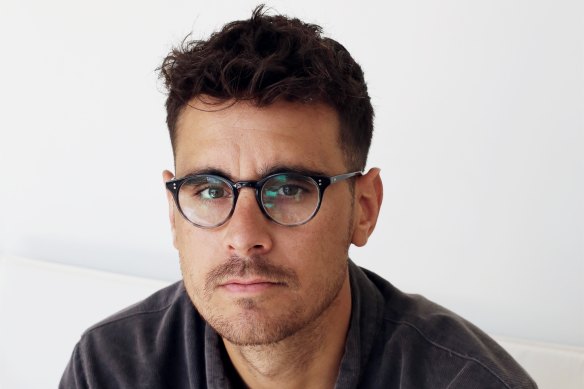
There are two types of novelists – the idealists who think they can change the world, and the pessimists who know they can’t. I once thought the idealists to be fools, particularly when it comes to crime fiction. How could a genre novel – often scorned by the intelligentsia – effect real change? But I have begun to think that art, even a murder mystery so often labelled as “mere entertainment”, may not be so impotent after all.
I’d been chewing on this idea as I made the final edits on my new novel 17 Years Later, and was confronted by the question when a woman at a writer’s festival asked me: “What is the point of crime fiction? What can a crime novel do?” Under the bright lights I was struck dumb. The easy response, and perhaps the one she expected, was “entertainment”. It’s an answer that is not untrue, but functionally meaningless, as most books entertain.
I didn’t like the subtext either: that genre fiction has less consequence and cultural value than other novels. I wanted a better answer. I thought about what I had gained from reading crime fiction: statistics about jury selection, for example, and how lawyers skew the balance against women and people of colour. And often, as I flicked through their pages, I’d gain empathy for the real people involved in criminal justice.
Crime fiction asks, “who is guilty?”, and in this way, the author forms a contract with the reader: the crime will be resolved, every red herring will be explained, and justice will be served. In this way it can feel formulaic. But if the biggest question in crime fiction is about who is guilty, then perhaps its greatest value is in turning the notion of guilt on its head by asking “Who gets to be innocent?” I’m endlessly fascinated by this question, which led me on to researching wrongful convictions in the US, New Zealand, and here in Australia; 17 Years Later became more preoccupied with the concept of innocence than guilt.

J.P. Pomare: “Race, nationality, age and sex all influence your chances of staying out of prison.″
The main character in my story is, like me, a Māori man. Bill works as a private chef for a wealthy British family, and when the family members are brutally murdered, he is arrested. It’s quickly apparent that the investigation is botched and racially targeted. I read about analogous cases in New Zealand – Māori men convicted of violent offences and sentenced to long periods in prison, only to be released years later when new evidence came to light. We’ve also had very famous wrongful convictions here, such as that of Lindy Chamberlain.
But the case that I was most influenced by during my research was that of Amanda Knox. In 2007, she was famously arrested and charged with the murder of her housemate in Italy. The conviction was overturned, and she was released four years later.
Her story has everything – sex, lies, corruption and a truly compelling protagonist. The most troubling aspect of the Knox case was the fact that the police had also arrested and charged the real killer and there was no obvious link to Knox. The only evidence the prosecution could use was tenuous at best: tabloid photographs of her in the aftermath of the murder displaying behaviour not usually associated with mourning. All this in the absence of any physical evidence.

Amanda Knox arrives for her appeal hearing in 2011.Credit: Reuters
Knox is now a staunch advocate for justice reform and programs such as the Innocence Project, which works to overturn wrongful convictions. I reached out to express my support and admiration as I embarked on 17 Years Later, and she pointed me towards some invaluable resources to help contextualise the wider societal problem of wrongful conviction. Ten per cent of US prison inmates have been wrongfully convicted. The figure in Australian prisons is thought to be 7 per cent, according to a 2017 study, but lawyers say this statistic should be viewed cautiously.
It can cost hundreds of thousands of dollars, and countless hours to appeal a wrongful conviction. This includes costs for privately funded DNA testing, crime-scene, blood-spatter and ballistics experts and of course lawyers’ fees. To fund appeals, prisoners usually need donations and supporters, and those without money or volunteers will usually serve their sentence without ever getting their appeal off the ground.
Loading
To garner public support, cases need to tick all the boxes: obvious potential of injustice, a high-profile case and/or trial, positive public sentiment, and it helps to be a certain kind of prisoner. This is where Knox deviates from the majority of wrongful convictions, like that of my protagonist and many other First Nations prisoners. She was both the perfect suspect for the Italian media and the perfect victim for the international media. She’s a white woman with wholesome American good looks, clever and well-spoken. The reality is most people who are wrongfully convicted won’t tick those boxes.
While the Innocence Project has successfully freed more than 300 wrongfully convicted prisoners in the US, it’s only managed to successfully overturn one conviction here in Australia. Wrongful convictions are woefully underreported and very difficult to correct in our country due to low funding and access to evidence. We’re years behind other developed nations. While I plotted the usual twists and turns when writing 17 Years Later, and thought about the reader’s entertainment, it was my research that continued to play on my mind.
I thought about how little it takes to become a victim of the justice system; how race, nationality, age and sex all influence your chances of staying out of prison. In my story, Bill is the perfect suspect. Statistically young Māori men, like Bill and I, are much more likely to go to prison if we are arrested. When you discover things about the world that frighten, confuse or even excite you, they will contaminate whatever project you are working on. And if people fully inhabit my characters as they read, they themselves will walk the maddeningly costly and impenetrable corridors of the justice system alongside those characters.
The central question asked in 17 Years Later is not simply one of culpability – did Bill do it? Rather I’m interested in whether there was enough evidence to pass the threshold of reasonable doubt. And how much did Bill’s race and identity influence the police and prosecution? Which leads us back to the original question: what is the point of crime fiction?
If a crime novel at its core is about the investigation of a crime, it follows that the point is for us to understand not just what happened but why. A crime novel satisfies two needs at once – the problem-solving itch, and the emotional pull. It’s a fine balance, making us care, dragging us into the drama while also encouraging us to think deeply about cause and effect. The point of crime fiction is of course the point of all fiction: to help readers see the world anew. If through the process they’re entertained – great. If they’re up all night, enthralled, turning page after page, so be it. But I also hope they ask themselves – alongside ‘whodunit? – Who is already behind bars that shouldn’t be…? And what does it cost us all when someone slips through the cracks…? After all, murder mysteries can ask so much more of their readers.
17 Years Later by J.P. Pomare (Hachette Australia) is out now.









 Add Category
Add Category